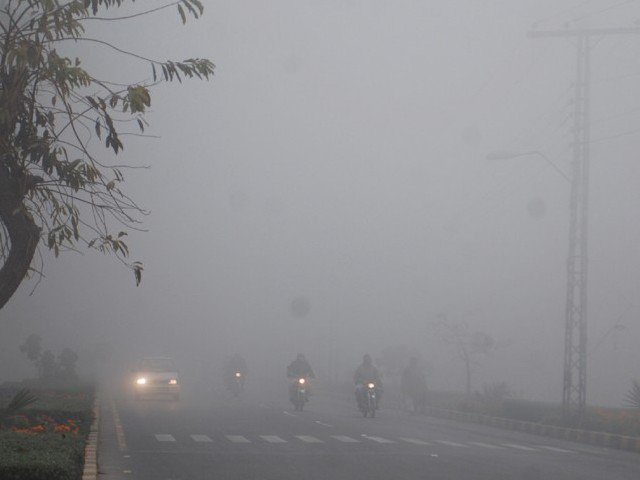
Smog triggered tripping also led to the forced closure of all Chashma Nuclear Power plants (C1, C2, C3, C4) where, after necessary technical and security protocol, the restoration process is underway. The power plants are expected to get back working in full capacity approximately in the next 72 hours.
Dense fog engulfs cities in Punjab
On the directions of the federal government, power plants of a cumulative capacity of 4250MW, run by expensive furnace oil or diesel are also closed.
The closed furnace oil plants include 950 MW Hubco, 1000 MW Muzaffargarh, 400 MW Jamshoro and 700 MW KAPCO while Nishat Power, Nishar Chunian Power, Liberty, Hubco Narowal, Atlas and Kel with a cumulative capacity around 1200MW, operated by diesel or furnace oil fired, were also closed.
The hydel generation average, meanwhile, has come down to 2700MW against its capacity of 7000MW due to less amount of water being released from reservoirs on provinces’ demand. The Sui Northern Gas Pipelines Limited (SNGPL) also curtained 200 mmcfd gas supplies fur to maintenance from November 3 to November 7, resulting in the reduction of another 50 MW in the system.
The aforementioned factors negatively affecting the demand and supply situation in the country and so, the power distribution system needs load management for a certain period.
The power division has directed the National Power Construction Company (NPCC) to chalk out an expert emergency load-management plan for 72 hours until the restoration of 1200 MW nuclear power plants.
A separate load-management plan, based on the demand and supply situation, is also being prepared by NPCC once the restoration process of the nuclear power plants is complete. However, since the demand is declining with a decrease in temperature, the overall situation is soon expected to show improvement.
The distribution companies have been directed to ensure maximum relief to the consumers besides keeping the drawl under the allocated quotas to ensure stability in the system. They have also been asked to circulate the load-management plan within their areas of operation for consumers’ information.
Minister inaugurates 220kv grid station in Gujrat
A dense smog situation in the province is posing serious challenges to the national transmission system as the power division, NPCC, NTDC and Power Distribution Companies (DISCOs) closely monitor the situation.
Special teams and lines formations have been deputed by NTDC and DISCOs to meet emergencies due to weather. Meanwhile, patrolling of all high transmission lines has also been increased by NTDC.
The power division regrets the inconvenience likely to be caused to its consumers, requesting them to adopt the policy of energy conservation during the next few days in a bid to minimise load on the system.

1732745394-0/Diddy-(4)1732745394-0-165x106.webp)















COMMENTS
Comments are moderated and generally will be posted if they are on-topic and not abusive.
For more information, please see our Comments FAQ